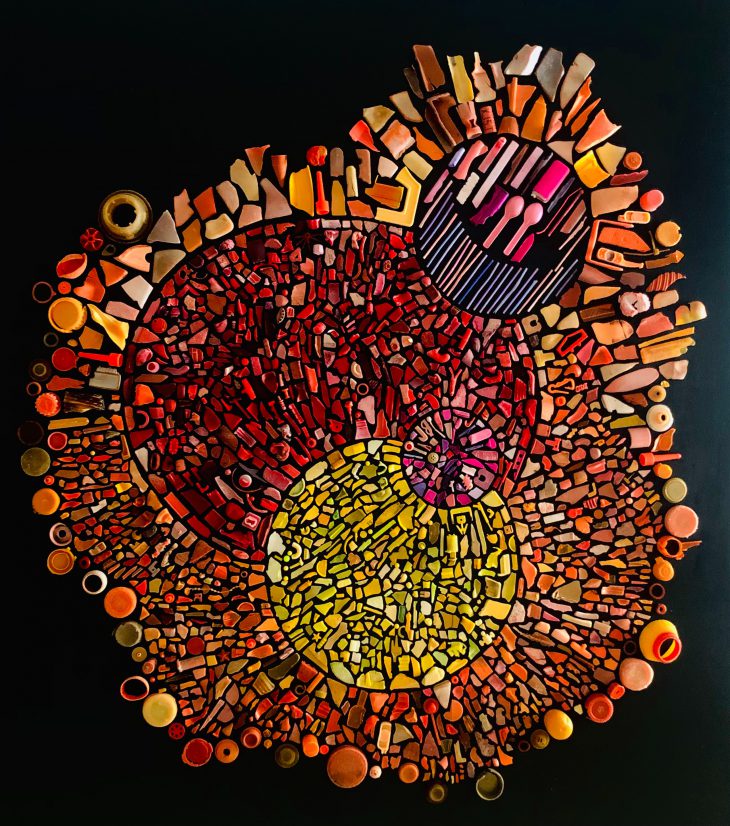Plastic is found in everything from food packaging to toys to grocery bags, and its use increases every year. Since 2017, 8 billion metric tons of plastic have been produced, but only a small fraction of it has been recycled. More than three quarters of this plastic has gone to landfills or been disposed of improperly in the environment. Large pieces of plastic left in the environment break down over time, leaving behind very small pieces of plastic that cannot be seen with the human eye. These are called nanoplastic and microplastic particles.
These tiny plastic particles have been found in both fresh- and saltwater sources, as well as drinking water. Studies have shown that repeated exposure to nanoplastic particles poses health risks to both humans and marine life. Scientists therefore want to develop reliable methods for removing nanoplastic particles from water sources.
Previous techniques used to remove nanoplastics from waters have many limitations. For example, methods that filter water through a membrane are very slow and the membrane is easily clogged. In another technique, salt solutions are added to water, which cause the plastic particles to float to the surface. However, this technique is not widely used because it is difficult to collect the very small particles at the water surface.
Scientists recently developed a method of removing nanoplastics from water with nanoparticles made of an iron and oxygen compound, called iron oxide. They combined these with a unique material that repels water, called a hydrophobe. Hydrophobes attract materials that cannot be electrically charged, such as plastic.
The scientists predicted that micro- and nanoplastic particles in water would stick to iron oxide particles that were coated in a hydrophobe. Since iron oxide is a magnetic material, the scientists planned to remove these iron oxide particles from water with a magnet, along with the micro- and nanoplastic particles stuck to them.
The scientists produced iron oxide nanoparticles from iron chloride and oleic acid in a furnace at high temperature and pressure. Half of the samples were made in argon gas, like in previous research, and the other half were made in air, for comparison. They explored four different hydrophobic coatings to determine which ones would most successfully attract plastic.
The scientists looked at the iron oxide particles with a high powered microscope, called a transmission electron microscope, to determine that the particles were generally cubic in shape and ranged in size from 60 to 120 nanometers. Then they examined the particles with a technique that shines an x-ray on a material and collects the x-ray that bounces off at different angles, called x-ray diffraction. This technique provides information on how the atoms are arranged in the sample, since the arrangement of atoms in iron oxide plays a role in its magnetic properties. They found that samples produced in air contained 72% of its atoms arranged such that the magnetic forces aligned parallel to one another, but samples produced in argon contained only 40% aligned forces.
Next the scientists characterized how much water the different coatings repelled. To do so, they covered a glass wafer in the coated iron oxide nanoparticles. They then added a drop of water to the surface of the glass. They photographed the drop of water and measured the angle of the water droplet with respect to the glass surface using a computer program. The higher this angle is, the more hydrophobic the coating is, because it is repelling more of the water drop. All but one coating had a contact angle above 90°, which means it would stick to plastic really well.
The scientists then ran experiments to see if the iron oxide nanoparticles could actually collect micro- and nanoplastic particles in water. They prepared water samples containing small plastic fibers in the lab. They also collected environmental samples from Packery Channel in Corpus Christi, TX. They then added the iron oxide nanoparticles to these water samples and observed what happened.
They found that two of the four different hydrophobic coatings worked particularly well for binding plastic particles. Using a small bar magnet, they were able to remove the iron oxide particles and attached plastics within minutes. The experiment worked in both fresh- and saltwater.
These scientists have successfully shown that micro and nanoplastic pollution can be quickly removed from water using iron oxide nanoparticles with hydrophobic coatings. However, these experiments were run with small water samples and a simple bar magnet in a laboratory. They suggested that future work should focus on expanding the research to larger volumes of water, for example, by incorporating a large electromagnet with on/off capabilities.


